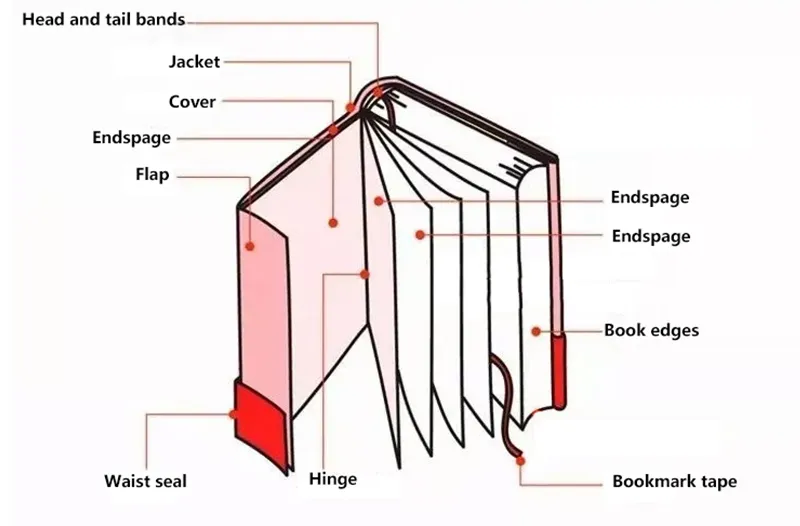Introduction
The art of book printing hardcover combines technology, craftsmanship, and aesthetics to transform written content into a tangible masterpiece. This article explores the essential aspects of hardcover book printing, offering insights for authors and publishers seeking high-quality book printing hardcover services.
The Evolution of Hardcover Book Printing



The journey of hardcover book printing, stretching back centuries, is fascinating. Initially, books were bound by hand, a labor-intensive process reserved for the most valuable texts. With the advent of industrialization, book printing hardcover evolved dramatically. This evolution was marked by introducing new materials, printing techniques, and binding processes, making hardcover books more accessible and affordable.
Today, hardcover book printing represents a perfect blend of tradition and technology. Modern printing techniques have enhanced the precision and efficiency of producing hardcovers while preserving the craftsmanship that gives these books unique appeal. Hardcover books’ durability and aesthetic appeal make them highly desirable for collectors and readers, ensuring their continued popularity in an increasingly digital world.
Technical Aspects of Book Printing Hardcover
The technical process of hardcover book printing is intricate and requires a keen eye for detail. Key elements include:
Paper Quality
The choice of paper is crucial in hardcover book printing. High-quality, durable paper enhances the reader’s experience and contributes to the book’s longevity. Options range from standard paper to premium acid-free papers, depending on the book’s purpose and audience.
Printing Techniques
Modern book printing employs various techniques like offset printing and digital printing. Offset printing is renowned for its high-quality output and is cost-effective for large runs, while digital printing offers flexibility for shorter runs and custom projects.
Binding Process
The binding of a hardcover book is a critical step. It involves several stages, such as sewing the pages together, attaching them to the book’s spine, and then covering it with a hardcover, which can be further customized with various textures and designs.
Cover Design
The cover of a hardcover book is not just a protective layer; it’s the first thing a reader sees. It can be customized with various materials, including cloth, leather, or printed paper. Embossing, foil stamping, and dust jackets are popular options to enhance the book’s aesthetic appeal.
Carefully considering these technical aspects ensures the final product is functional and a work of art, embodying the essence of book printing hardcover.
Design and Customization in Hardcover Printing
In book printing, hardcover, design, and customization are vital in differentiating and making a book stand out. This section explores the various options available for customization.
Tailoring to Audience and Content
The design of a hardcover book should reflect its content and cater to its target audience. Children’s books use bright, vibrant colors and characters, whereas academic texts often opt for a more subdued and formal appearance.
Cover Customization
Customizing the cover of a hardcover book is an opportunity to make a strong visual statement. Choices include various finishes, such as glossy, matte, or textured surfaces, and the incorporation of unique design elements like embossing or metallic foiling.
Special Features
Hardcover books can include special features like ribbons for bookmarking, gilded edges, or slipcases, which add a touch of elegance and improve the user experience.
Sustainable Options
Increasingly, publishers and authors are looking for eco-friendly options in book printing hardcover. This can include the use of recycled materials or sustainable production processes, aligning with environmental concerns while maintaining quality.
The customization possibilities in hardcover book printing are endless, allowing authors and publishers to create a product that represents their vision and resonates with their audience.
Common Challenges in Hardcover Book Printing
Navigating the complexities of hardcover book printing involves facing and overcoming several challenges. This section addresses some of the most common concerns and their solutions.
Balancing Quality and Cost
One of the primary challenges in book printing hardcover is balancing the need for high-quality output with cost considerations. Solutions include choosing cost-effective materials without compromising quality and optimizing the print run to achieve economies of scale.
Managing Production Time
Timely delivery is crucial in the publishing industry. Effective project management, including precise scheduling and coordination with printing services, can significantly reduce production time.
Minimum Order Quantities
The minimum order quantities can be a barrier for many publishers, especially independent ones. Some printing services offer flexible order quantities to cater to a broader range of clients.
Keeping Up with Technological Advancements
The printing sector is in a constant state of evolution, driven by emerging technologies. Keeping abreast of the most recent developments and integrating state-of-the-art printing methods can significantly improve the excellence and effectiveness of hardcover book production.
Addressing these challenges effectively can lead to a smoother printing process and a superior final product, fulfilling the needs of both the publisher and the reader.
Selecting a Book Printing Hardcover Service
Choosing an exemplary hardcover book printing service is critical to the success of any book project. Here are some factors to consider when making this decision:
Experience and Expertise
Look for a printing service with a strong track record and expertise in hardcover book printing. Experienced printers can provide valuable guidance and ensure high-quality results.
Quality Control
Quality is paramount in book printing hardcover. Check the printer’s quality control processes, including material selection, printing methods, and binding techniques.
Customer Service
Good customer service can make a significant difference. Choose a responsive printer that communicates clearly and is willing to collaborate closely throughout printing.
Cost and Value
While cost is a consideration, it should be balanced with the value offered. Competitive pricing, without sacrificing quality, is critical.
Sustainability Practices
For those concerned about environmental impact, it’s worth considering a printer’s sustainability practices, such as using eco-friendly materials and processes.
Selecting the right printing partner can ensure a smooth process and result in a hardcover book that reflects the author’s vision and appeals to its audience.
Conclusion
Hardcover book printing is not just a process; it’s a commitment to quality and longevity in publishing. By focusing on the details, from paper selection to binding and cover design, publishers and authors can create books that are as durable as they are engaging. Choosing the exemplary printing service is crucial in bringing this vision to life, ensuring that each book is a tangible representation of the story it holds. In an age where digital media dominates, hardcover books stand as a testament to the enduring value of printed literature.




